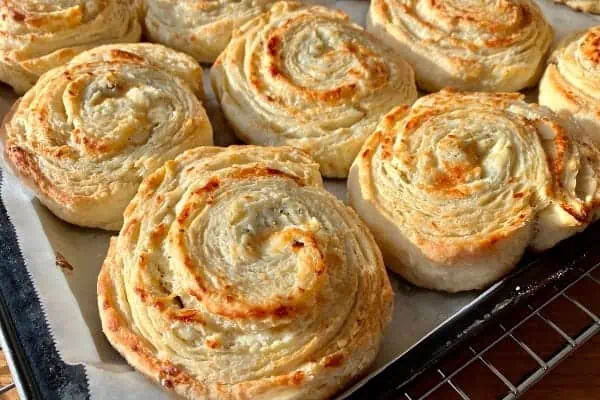By the time this article is in print, we will be on the cusp of the Beaujolais Nouveau season.
Each year I look forward to the experience and wait impatiently for this new French wine to arrive on the shelves as soon as possible after the third Thursday of November.
Each year the Georges Duboeuf wine house designs a different, floral-patterned label and also releases a limited-edition bottle with the floral pattern painted on the outside. In the U.S., Duboeuf even gives out matching floral-print ties to wine merchants – I have one matching the 2004 label that I still enjoy wearing.
So what’s all the fuss about Beaujolais Nouveau?
Beaujolais is a wine-growing region in eastern France comprised of 11 small villages, surrounded by vineyards filled primarily with Gamay grapes.
Each September, the grapes are harvested after their summer of growth. They will be pressed and made into the vintage of that year.
So when someone talks about a “2000 Bordeaux,” or a “1997 Brunello,” they are talking about wine made from grapes picked in the fall of that year from that region (Bordeaux) or made into that type of wine (Brunello).
With almost all grapes, the fermentation process (the working of the yeast that turns grape juice into wine) takes at least 12 months. Better wines are usually aged 18 to 24 months, or longer.
You will notice that many wines currently available in the wine store will be from the 2008 vintage, or older. While older is not necessarily better, some famous wines may be aged in barrels for years, or even decades.
In the case of very rare Port or Madeira vintages, it could even be centuries. I have a bottle of 1834 Madeira that was aging in the barrel until 1999, and is now sleeping quietly in a cellar in South Carolina (yum!).
But back to Beaujolais Nouveau.
Unlike the aforementioned wines, Beaujolais Nouveau is fermented rapidly and, by French law, is bottled and can be sold as of the third Thursday of November.
So the span from grape on the vine to popping the cork on the 2010 vintage Beaujolais Nouveau bottle is only about eight weeks! A very different wine experience.
In North America, the Beaujolais Nouveau importers have built a whole marketing campaign around tasting this first wine of the year’s vintage. Despite all the hoopla, I do enjoy the ritual.
In Paris – and indeed, many places around the world – bottles go on sale at one minute after midnight. Back in the day, the Concorde would deliver the first cases to New York.
This year, as every year, Parisians walking to work on Friday, November 19 will see chalkboards outside bistros and wine shops with “Le Beaujolais Nouveau est Arrivé“announcing the arrival of the first of the 2010 vintage.
Many enthusiasts will stop in for a taste, and be able to discuss the virtues of the new vintage with their co-workers when they arrive at work.
Up here we’re on “Yukon time”, and I don’t expect the bottles on the shelves until the following week. (Please prove me wrong, YLC!)
Beaujolais Nouveau is fresh and fruity, and a terrific starter wine for those who have enjoyed whites, but are just starting to explore reds.
I have enjoyed it with roast turkey, and find it goes especially well with dishes like cous-cous, where a spicy stew of lamb or beef or chicken (or maybe moose!) is seasoned with raisins and served over steamed cous-cous grain.
So I know what I am serving the last weekend of November. And if past years are any indication, the pricing of this year’s Beaujolais Nouveau will likely be in the $17 to $20 range.
Beaujolais Nouveau is meant to be drunk young. It will likely be sold out at the YLC by the second week of December. I have heard people say that it should be drunk by New Year’s, which I think is a good precept.
At the top of this article, I mentioned the 11 villages of Beaujolais. Aside from the famous Beaujolais Nouveau, the winemakers of these regions make excellent Beaujolais that are aged for a year, and are excellent wines to be drunk at one to three years of age.
The most common are Beaujolais Villages, and there are currently three offered at the YLC. They are: Georges Duboeuf Beaujolais ($17.45), Bouchard Wine & Fils ($17.05) and Pisse-Dru Beaujolais ($18.65).
These are all blends of various Gamay grapes from the region and any of the three is worth a taste. Outside the Yukon, you may see Beaujolais wines from, and named after, specific villages such as Brouilly or Morgon (my favourite).
Snap a bottle and give it a try if you have a chance. Happy tasting!
Update on my last article on ordering wine: During my last visit to the Liquour Corp., I was corrected on the delivery time frame cited in my article. It should have been 6-8 weeks, rather than the 3-4 I wrote. Sorry! I’ll report when I get my order.




